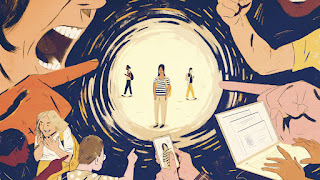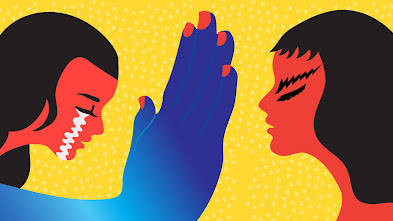Bullying is a form of trauma
Bullying is Trauma
Let's discuss what bullying is, bullying is repeated aggressive behavior when one person (or group) is in a position of power and deliberately intimidates and abuses an individual to hurt that person physically or emotionally¹. Bullying takes up a child's emotional well-being but it's the actions that vary. Four types of bullying could occur separately or simultaneously. Bullying can affect a child's mental health leading to anxiety, depression, and loneliness can result in suicide².
- Physical bullying; pushing, hitting, kicking, inappropriate touching, breaking objects, or damaging other stuff intentionally
- Verbal Bullying; name-calling,threats, demeaning jokes, rumors, and slander
- Social Bullying; social exclusion, mimicking unkindly, damaging someone's social reputation, playing menacing jokes to embarrass and humiliate
- Cyber bullying; abusive, threatening, or hurtful texts, emails, posts, videos, or images, imitating others online
Warning Signs of Bullying?
Bullying can happen at any age starting from preschool to adulthood. Very few children tell their, parents if they are being bullied, this makes them feel weak and ashamed that they can't stand up for themselves. This makes it worse for children because of how sensitive their minds are and how easily overwhelmed they can be. Since bullying comes in many forms and it's difficult to identify, what signs can we notice to make sure that children will be safe³:
- Not wanting to go to school
- Self-harm
- Having no friends
- Angry outbursts
- physical injuries; bruises, cuts, or scratches
- Isolated or withdrawn
- Losing interest in their social activities
How to provide support as a Parent?
If bullying is not challenged and stopped, it can be contributed to the system of it always being tolerated and has children feeling powerless. If your child is being bullied, don't take it lightly because you may not know what they are feeling. Have an open-minded conversation if you notice how different your child is acting, ask them if are they having problems at school? are there friends being kind and not excluding them? if so, makes sure you are there to help him/her.
Teaching your child to handle Bullying
Before your child is exposed to bullying teach them how to handle bullying without them feeling defeated or timid. Try practicing at-home scenarios for your child to ignore bullies or be assertive when it comes to being bullied or witnessing bullying. Assist your child in understanding that there is nothing wrong in telling a teacher, or another peer to help you stop the bullying.
Setting boundaries with technology + Statistics on Cyber bullying
About 37% of individuals between the ages of 12 and 17 have been bullied online and about 30% have had it happen more than once³. 95% of teens in the U.S. are online and the majority access the internet, making it the most common medium for cyber bullying 23% of students have reported that they've been cruel and said demeaning comments to another person online, and 27% have reported they've experienced the same from someone else¹. Monitor your child's social status online, who are they texting, and are they being appropriate with others?
What else should you know?
If your child is the bully let them know that it's unacceptable and enforce consequences. If it continues talk with guidance counselors to get a better insight to better help your child. If your child becomes the bully be sure to be firm but not to the point of breaking them down. Ask them why they are acting the way they do? what makes them say these mean things to someone else? what influenced them. Always be a role model for your child, they have to understand the benefits and dangers of social media and the internet and why they must be cautious.
Sources
2. Brown, L.M. (2019) Understanding Traumatic Stress in Adolescents: Primer for substance abuse professionals. 11.634-9. https://drive.google.com/file/d/1OPwKnFufW63geXCn59U-ESZzTvLxuGhk/view?usp=drivesdk
3. Kimberly Senko, BS, and Harper Bethany, MD. (2019) Play Therapy: An Illustrative Case. Innovations in CClinicalNeuroscience. 16 (5-6): 30-40. https://www.ncbi.nlm.nih.gov/pmc/articles/PMC6659989/





Comments
Post a Comment